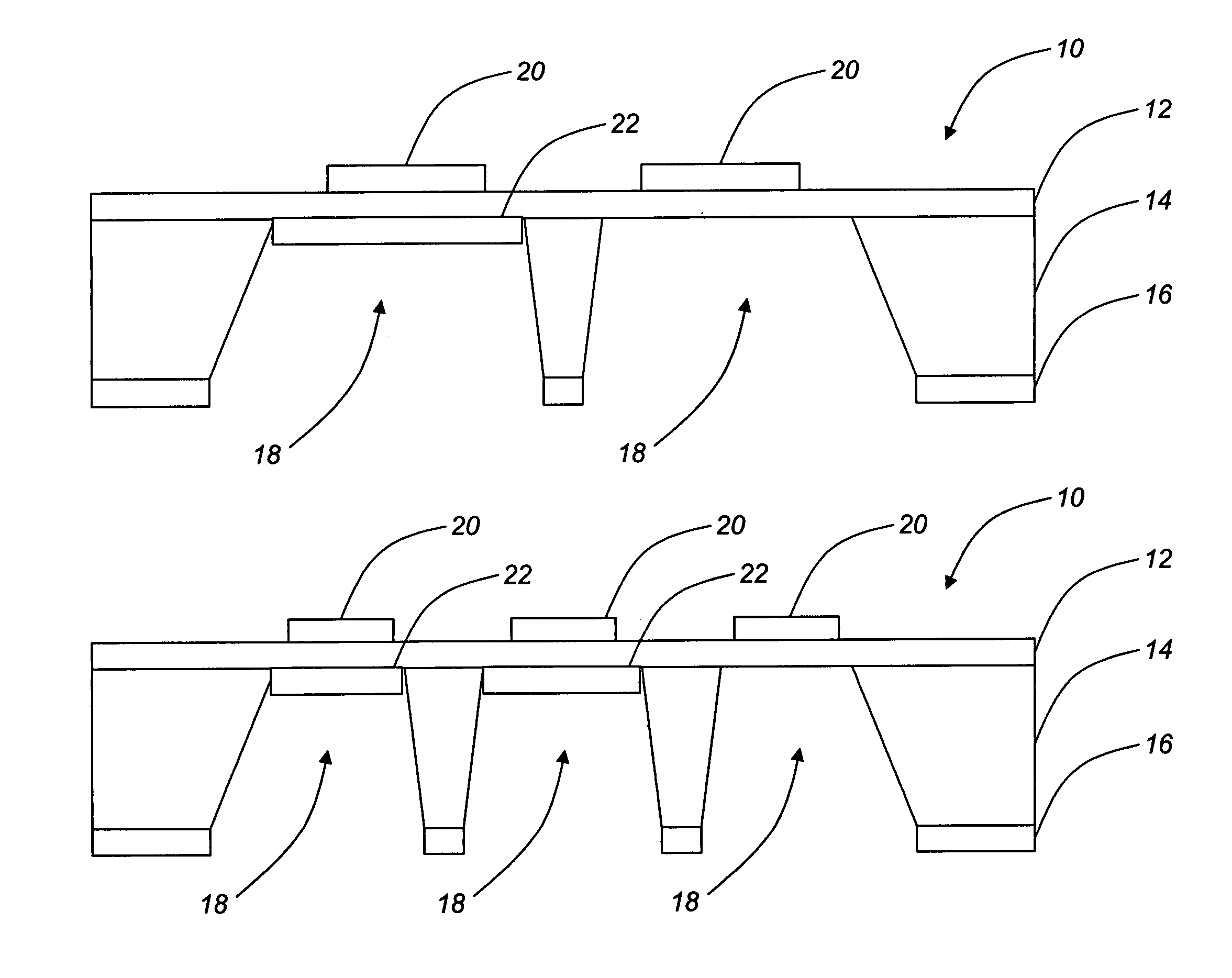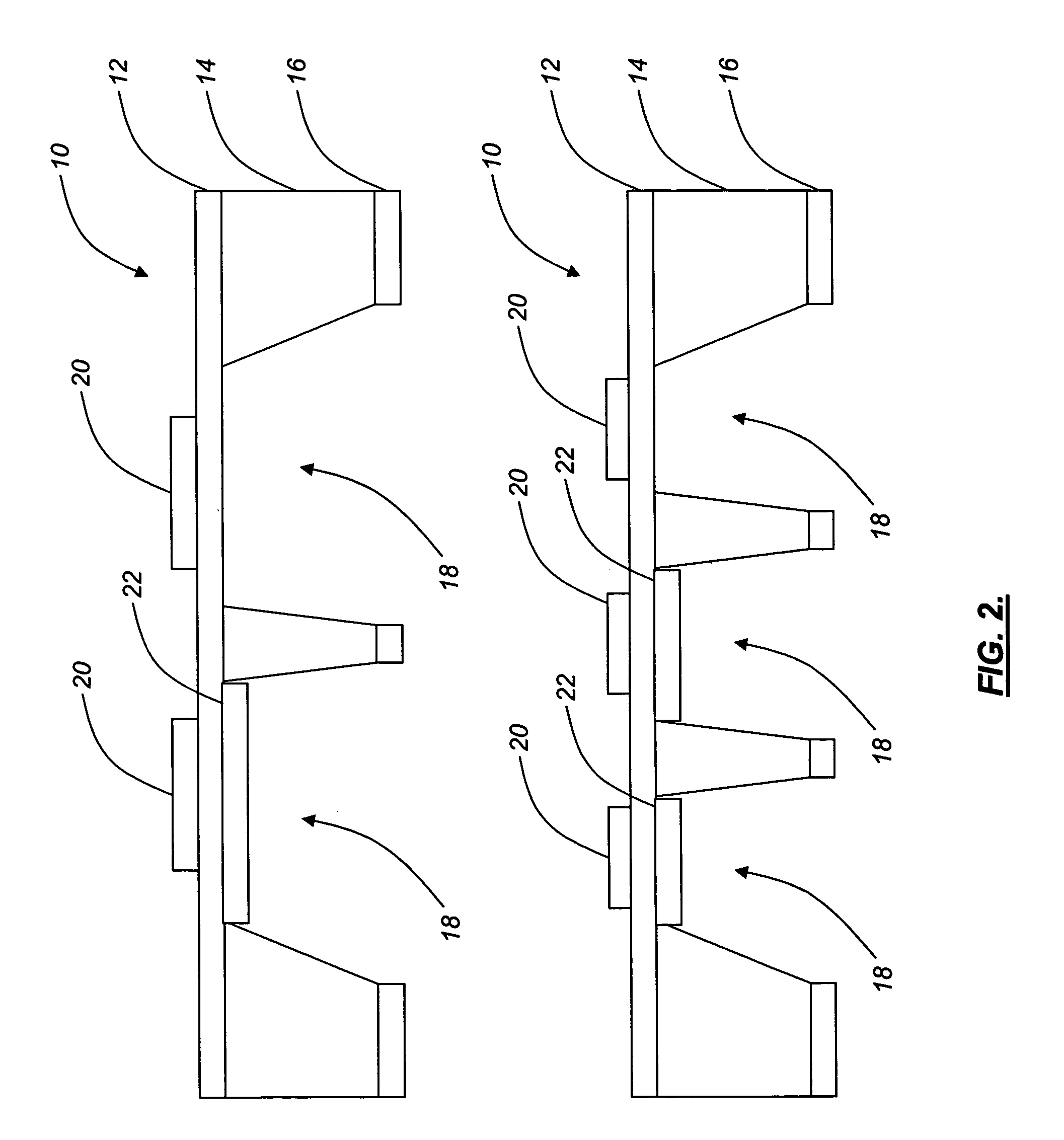Miniaturized multi-gas and vapor sensor devices and associated methods of fabrication
a sensor device and nano-scale technology, applied in the direction of instruments, material heat development, specific gravity measurement, etc., can solve the problems of limited materials that may be used to build devices, none of these devices demonstrate the desired combination of robustness, sensitivity, repeatability, and reliability, and it is difficult to optimize with conventional multi-gas and vapor sensor devices without making sacrifices with respect to other performance parameters. , high sensitivity of differential scanning nano, high adsorption ra
- Summary
- Abstract
- Description
- Claims
- Application Information
AI Technical Summary
Benefits of technology
Problems solved by technology
Method used
Image
Examples
Embodiment Construction
[0039]Referring to FIG. 1, the sensor device 10 of the invention, which may be a multi-gas or vapor (e.g., humidity) sensor device, among other sensor devices, consists of a multi-cell ultra high-sensitivity differential scanning calorimeter (UHSDSC), which is a microelectromechanical system (MEMS). The sensor device 10 is fabricated using standard silicon processing techniques, well known to those of ordinary skill in the art. The sensor device 10 includes a thin, thermally-insulating silicon oxinitride (SiONx) membrane 12 disposed directly adjacent to a silicon (Si) frame 14. It should be noted that other suitable materials may replace the silicon oxinitride membrane 12 and / or the silicon frame 14. For example, the silicon oxinitride membrane 12 may be replaced with a silicon, polysilicon, parylene, or polyimide membrane. Preferably, a thin silicon oxinitride layer 16 is also disposed directly adjacent to the silicon frame 14 opposite the silicon oxinitride membrane 12. Again, oth...
PUM
| Property | Measurement | Unit |
|---|---|---|
| thickness | aaaaa | aaaaa |
| thickness | aaaaa | aaaaa |
| thickness | aaaaa | aaaaa |
Abstract
Description
Claims
Application Information
 Login to View More
Login to View More - R&D
- Intellectual Property
- Life Sciences
- Materials
- Tech Scout
- Unparalleled Data Quality
- Higher Quality Content
- 60% Fewer Hallucinations
Browse by: Latest US Patents, China's latest patents, Technical Efficacy Thesaurus, Application Domain, Technology Topic, Popular Technical Reports.
© 2025 PatSnap. All rights reserved.Legal|Privacy policy|Modern Slavery Act Transparency Statement|Sitemap|About US| Contact US: help@patsnap.com



